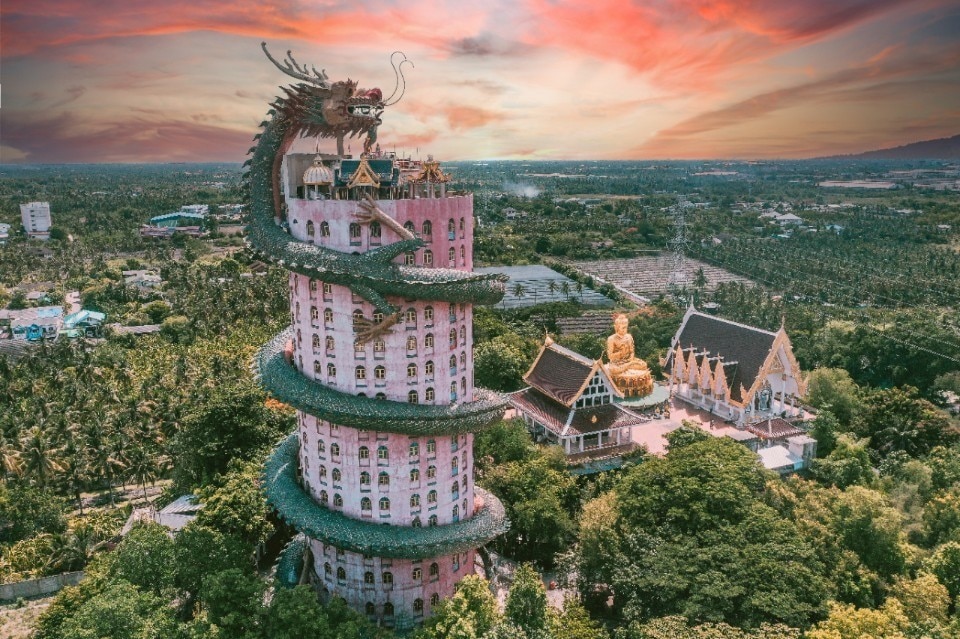The dragon is an ancient mythological figure, transversal to all cultures but rich in antithetical meanings depending on the context.
In the West the dragon, a large flame-spitting winged reptile with ferocious jaws and predatory claws, tends to represent evil: with the exception of a few attempts at rehabilitation – the fireman Grisou, the cuddly Fùcur, the dragoness of Eragon, the invisible Elliott – the dragon releases, in addition to the flames that incinerate armies and threaten maidens, an aura of evil that heroes fight with alacrity, from the sauroctonic saints of Christianity to the paladins of Norse mythology, from Tolkien to Disney.
In Eastern culture, on the contrary, the dragon is considered a symbol of good luck and prosperity and is widely venerated and respected: its wingless body, agile and serpentine, floats through the air bringing with its beneficial breath – the ‘Chi’, the life energy of the Universe – peace, balance, health. Although, like the weather and the rain of which it is the guardian, it is sometimes capricious.
From the origins of time to the present day, the dragon “flies” through the centuries and countries and is a current element in the history of architecture becoming, depending on the case, a horrific or sacred figure, a warning or a propitiatory one, but enriched in all cases with an intriguing charm.
We propose below a brief excursus of the iconography of this famous blazing creature in architecture: from Asian ancestral temples (Jinci Temple) and Gothic cathedrals (York Minster), to the modern age (Gaudi’s Figueras House and Casa della Vittoria) and contemporary, when dragons casually pass through huge gaps in buildings (Dragon Holes in Hong Kong) and wrap temples in their coils (Wat Samphran Dragon temple), or more quietly merely serve as a source of design and creative inspiration (NEXT architects, Studio Libeskind, Zhou Yang, Cheng-Tsung Feng Design Studio).



















